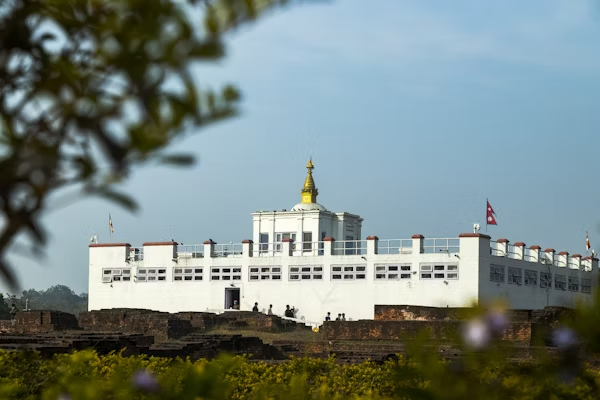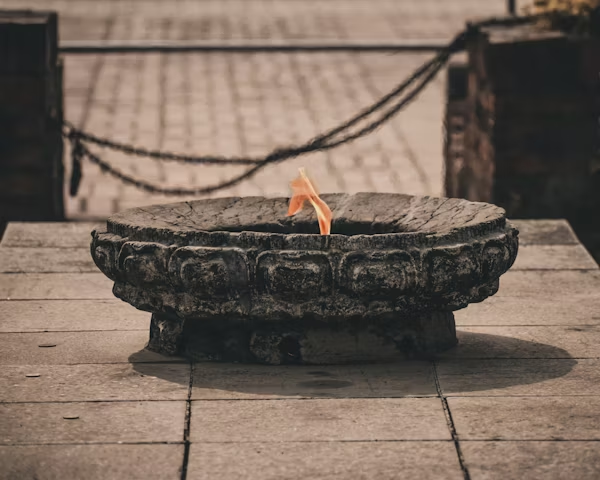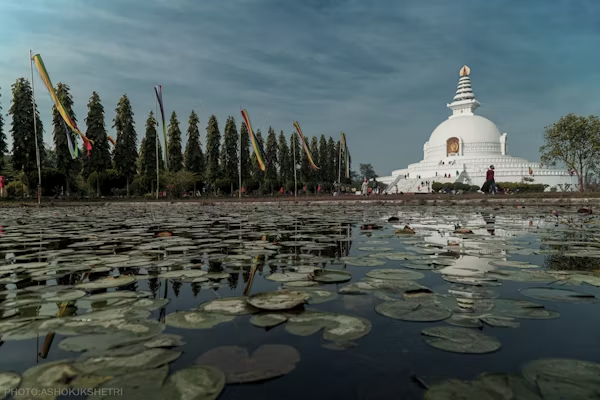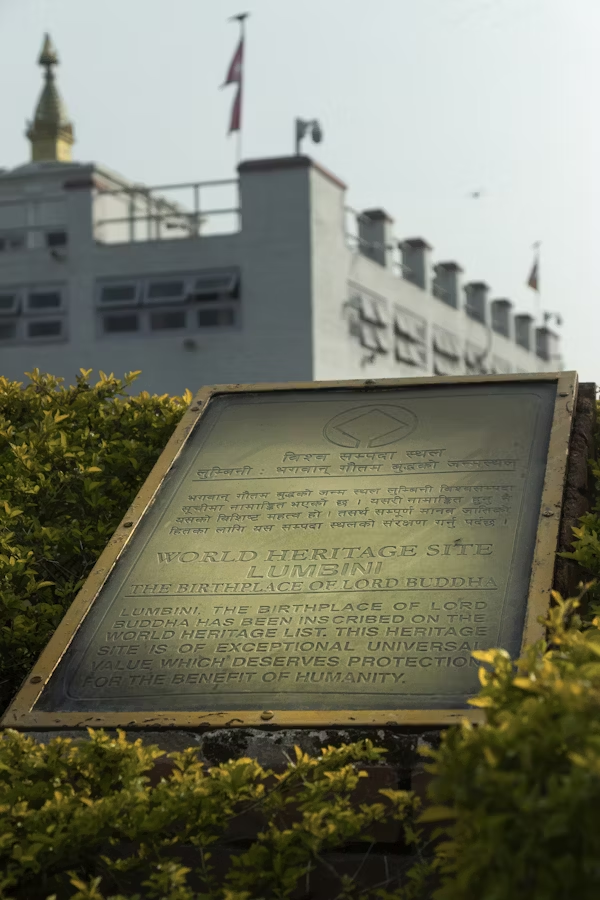After having traveled to many corners of the world, nothing compares to the deep impact of being at the birthplace of one of the most celebrated figures in human history. Lumbini, in the southern plains of Nepal, is not just a pin in the map. In fact, such sacredness, such solitude, and such sacred symphony resonate throughout the teachings of the Buddha. The birthplace of Siddhartha Gautama, who later became known as the Buddha, is more than a place of history; it is an opportunity for reflection and communion with something far larger than ourselves. Visiting Lumbini was a journey that spanned more than a physical geography, but also history and spirituality.

Not just the fact that Lumbini is a UNESCO World Heritage site and it contains the narrative of Buddha’s birth; more importantly, the very essence of peace and reverence in the air makes this place significant. This is the place where Buddha was born, and its exact location is symbolized in the form of the sacred Maya Devi Temple. It is the symbol of peace to all mankind of various religions. The park surrounding that temple is cool and serene, perfect for meditation, contemplation, or just walking on the very soils where the Buddha entered this world over 2,500 years ago.
The Historical Significance of Lumbini
Lumbini is thus considered historically important and religiously important. It is believed that Queen Maya Devi, on her way from Kapilavastu to her father’s house, gave birth to Prince Siddhartha in 563 BCE. Given the legends, Maya Devi gave birth to him under the shade of a tree, while lotus flowers were blossoming everywhere around her. This event has been noted to be one of the most remarkable landmarks in the spiritual history of mankind. Therefore to Buddhists, this is where the enlightenment journey began.
Though equally remarkable are the archaeological sources here. The very birthplace of the Buddha is argued to be within the precincts of the Maya Devi Temple, which has gone through several rounds of renovations and restructurings over the years. The Ashoka Pillar, erected by Emperor Ashoka in 249 BCE, remains as a monument to the antiquity of the connection between Lumbini and the worldwide dissemination of Buddhism. The emperor’s pilgrimage to Lumbini, therefore, was a crux to the momentous occasion for the establishment and propagation of Buddhism as a religion.

Places to Visit in Lumbini
These are the places that make Lumbini with some unique sights and sounds:
- Maya Devi Temple: This is the most important one since it marks the exact point where Buddha was born. You’ll find an image inside the temple of Maya Devi and a structure of stone supposed to be Siddhartha’s birthplace. The temple is surrounded by beautiful gardens and a very quiet atmosphere for introspection.
- The Sacred Garden: This is a lovely stretch of area filled with trees, ponds, and tracks for walking. A very quiet place, ideal for meditating. Close to here, at Maya Devi Temple, there is what’s popularly said to be the pond where Buddha’s mother took ritual bath after delivering him.
- The Ashoka Pillar: This pillar erected by the Emperor Ashoka on the 3rd century B.C.E. pilgrimage remains as an important record of history as an edifice. The pillar, inscribed with Ashoka’s message, remains as proof of propagating Buddhism from within and link Lumbini to it.
- Lumbini Museum : A visit to Lumbini Museum is a must for an exploration of this place’s history and cultural import. It boasts an impressive collection of Buddhist artifacts, sculptures, and exhibits depicting the journey of Buddhism originating from Nepal to other parts of Asia and globally.
- World Peace Pagoda : The World Peace Pagoda is definitely not an original site in Buddhism; however, and due to the feeling of hope for peace in the world, it’s taken pretty darn iconic. Serene standing here, this pagoda modernizes the backdrop of ancient spiritual heritage that Lumbini carries with it.

Lumbini’s Global Importance
Lumbini is not only a site of historical importance; it is a world center for the teachings of peace, compassion, and enlightenment. The international community conveys this importance, and the site attracts pilgrims from all corners of the globe. In honor of Buddha’s birthplace and to provide a space in which pilgrims could engage in spiritual practice, countries such as Japan, Thailand, Myanmar, and China have built temples and monasteries in the surrounding areas of Lumbini.

The government and local communities carefully maintain the gardens and surrounding areas of the Lumbini site, ensuring that it remains just as peaceful and meditative as it has been for centuries. Eco-tourism and spiritual travel together now welcome a different category of visitor to Lumbini-those who want to seek not only historical knowledge but a more profound transformation. The calm atmosphere and rich cultural memory produce in these visitors a remarkable ambience conducive to peace and self-reflection.
My Experience of Lumbini
Day 1: Arrival and Immersion in Holy History – Lumbini
With a 30-minute drive from Bhairahawa to the birthplace of the Buddha, I traveled by a short flight from Kathmandu. The very first moment, I realized how quiet it was. The hustle and chaos of city life felt worlds away. I spent the night in a modest guesthouse near the main entrance of the Lumbini complex before sharing this glorious historical and spiritual place with myself.
I spent my first afternoon at the Maya Devi Temple, where the sacred birth site of Siddhartha Gautama is located. The stone felt humbling as I stood on it, being aware that I was in the exact spot where Buddha’s life began. Simple as it was, the temple felt full of an energy of reverence and tranquility; I took a small stroll around the Sacred Garden, feeling the breeze brush against me, listening to the sounds of bird chirps in the trees. It was nice and peaceful for a bit of quiet reflection. I couldn’t help but think of the peaceful message that Buddha’s life and teachings carry-an idea which became more evident as I walked through the grounds.
Later visited the Ashoka Pillar. This was erected as Ashoka’s pilgrimage to Lumbini in 249 BCE. The pillar inscribed with Ashoka’s message of peace was unbelievable to view-it struck me with the depth of history this place held. Evening came on, peaceful as the golden light of the setting sun bathed the temple complex, making it all the more magic. I closed my day with a stroll through the quiet Lumbini Museum, where diverse exhibitions cataloged the world spread of Buddhism. There was so much history and beauty packed into this one place, leaving me both grounded and inspired.
Day 2: Taking Inspiration from the Surrounding and Buddha’s Message – Lumbini
My second day was up very early in the hope of using time most fruitfully. I went on the pilgrimage to the World Peace Pagoda, on top of a small hill. The scene was breathtaking; at this point, one saw all of Lumbini sprawling before one and galloping off into the plains before another might glimpse the sleepless Himalayas in the distance. One of the monuments that Japanese Buddhists erected for world peace, world peace would be, in my view, so meaningful as I rested on the bench, enjoying the fabulous view and thinking about the meaning of these places that constantly remind me that you cannot grow without first establishing peace; I guess, personally and globally, too.
After leaving the pagoda, I then strolled to Lumbini Garden, which is such a lovely stretch of green where monks and pilgrims love to meditate. The winds were fresh indeed, and the stillness of the garden was just the ideal quiet solitude I was looking for. Here I meditated for a while, as I sank deep into my soul the peace in which I found myself. It was not only the physical beauty of Lumbini; it was also the spirit and emotional energy it reflected. The essence of time slowed down as I rose and fell into the moments-worth-being-shipped.


Reflection on Visiting Lumbini
As I stepped into Lumbini, I not only went back into history but also returned to myself. Standing in the sacred gardens with a view of the Maya Devi Temple, I could not help but become deeply imbued with the connection to the past, to the teachings of the Buddha, and to the vast expanse of human spirituality.
Lumbini, therefore, is not merely a tourist site; it is a place of deep stillness that invites sojourners to stop and ponder the greater questions of existence. Whether you are on a genuine spiritual quest for truth, a pioneer in the field of historical; or simply passing through wishing to lay your own eyes on the birthplace of Buddhism, one thing is certain: Lumbini will etch a lasting memory in your heart.
Ultimately, visiting Lumbini is not about just learning about Buddha’s birth-it is about connecting to a global message of peace and understanding. Lumbini stands as a reminder of the strength of compassion and the goodwill that we ought to impose on this planet. If you are ever in Nepal, a visit to this holy ground is worth every minute you can spare-thank me later.

